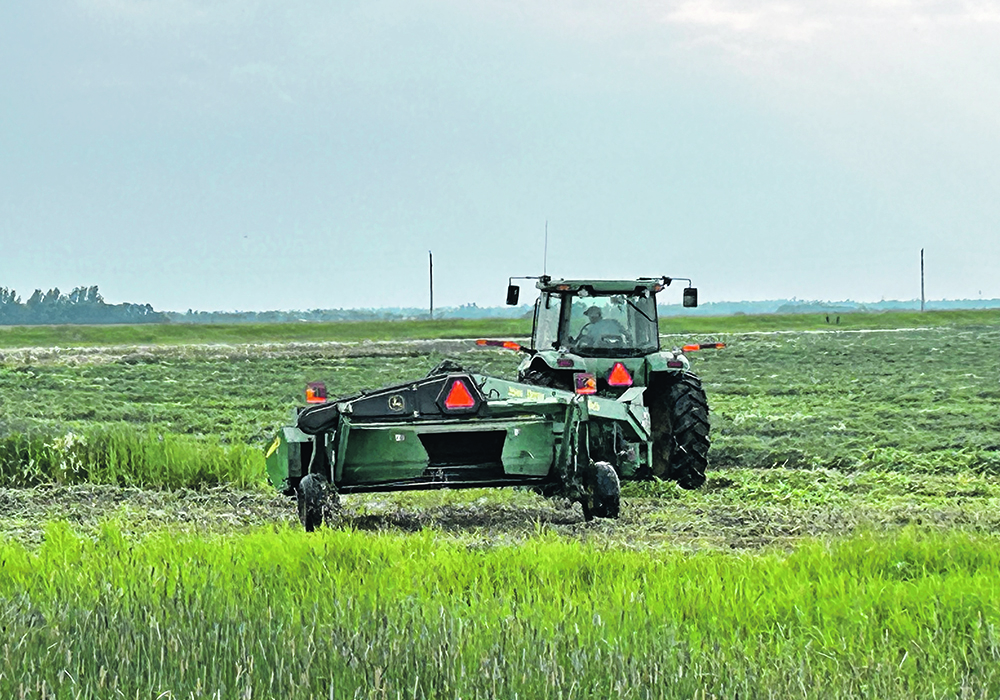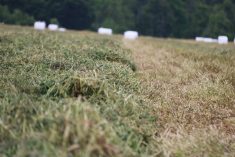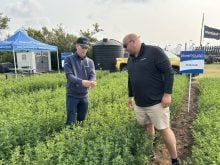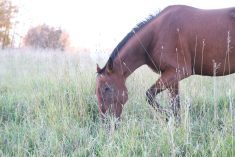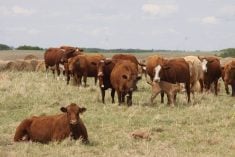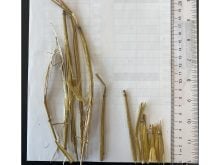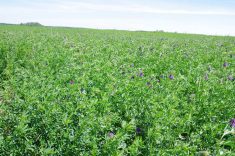Glacier FarmMedia – There’s no shortage of livestock feed across the Prairies but producers are urged to test feed to ensure quality this year.
“Stock is good,” said Manitoba livestock specialist Pam Iwanchysko via email Oct. 29. However, a lot of feed was harvested later in the season, putting it at higher risk for quality concerns.
As of Oct. 27, Manitoba Agriculture reported most of the central and eastern province had normal or above normal rainfall for the season, although it was slightly below normal in much of the Interlake, southwest and parts of the northwest and an area near Lac du Bonnet. The Swan Valley region has been as low as 60-70 per cent of normal since May 1.
Read Also
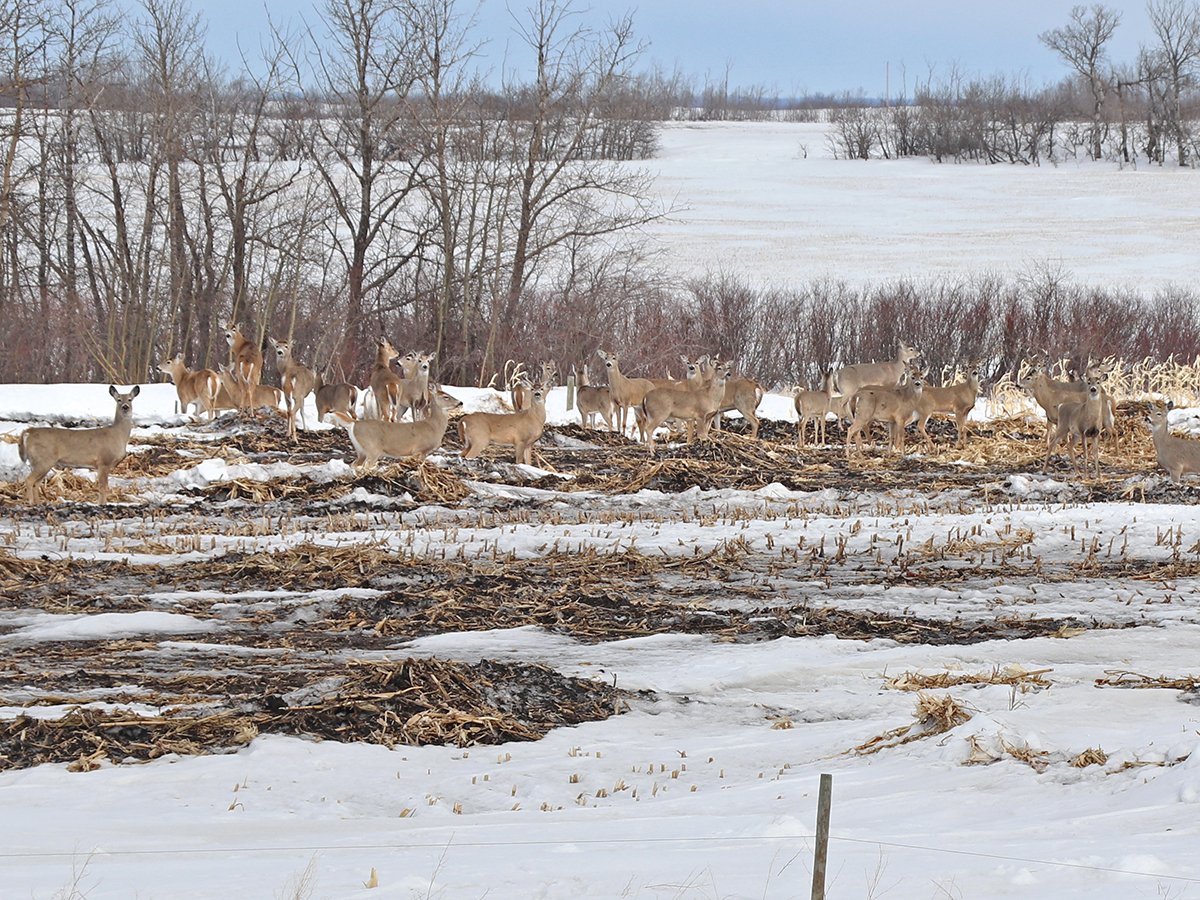
Foot-and-mouth disease planning must account for wildlife
Our country’s classification as FMD-free by the World Organization for Animal Health has significant and important implications for accessing foreign markets.
That’s a stark contrast to early and mid-summer. The first half of the 2024 growing season was loaded with rain. At the end of June, almost all areas had seen above average moisture, and some had measured over 200 per cent of average for that time of year.
Those looking for dry hay on first cuts faced challenges and delays with harvest and dry down.
As of Oct. 6, soil moisture in the top 30 centimetres was generally optimal across Manitoba, though there was some variability, according to a newsletter on the October hay situation and price update from the Manitoba Forage and Grassland Association.
Overall, the growing season was very good, said John McGregor, who offers extension support with MFGA.
“We had good moisture, fairly good conditions. First cut was not maybe as good as some years, but still very good,” he said.
The MFGA noted yields fell short of expectations in some regions but later-season moisture allowed extended grazing into fall.
“Pastures were in fairly good shape so cattle were able to graze a lot longer than normal,” McGregor said.
Many producers have a solid estimate of their feed supply for the coming fall and winter months. Testing that feed will tell the tale on its nutrients.

Testing is recommended even in ideal conditions to ensure cattle aren’t underfed or overfed and can get the nutrition needed for conception and calving.
In its fall market report, the Saskatchewan Forage Council showed record-high forage yields and overall improvement in hay quality compared to last year’s harvests, when the province was struggling with critical drought. Drought concerns persist due to declining moisture levels over the summer, it said.
Those concerns vary throughout Saskatchewan, said Shelanne Wiles Longley, who owns a small commercial cattle herd south of Regina and is executive director of the council.
“Some areas like the southwest, for example, have experienced drought conditions for probably the last five years … versus, let’s say, the northeast, which doesn’t have quite the same experience,” she said.
The report noted favourable spring conditions that doubled provincial forage yields compared to the previous year, with 94 per cent of the harvest rated as good to excellent.
“Generally speaking, the province in general here, I would say their forage situation is quite good, because they were hit with some very timely rains,” Wiles Longley said. “The hay fields all grew and then they were all harvested. And so, the amount of forage that’s out there doesn’t seem to be a concern this year in terms of the hay crop.”
Intense July heat drained moisture reserves and pasture conditions deteriorated. By mid-September, only 23 per cent of pastures were rated good to excellent.
Provincial averages in Saskatchewan for alfalfa, brome, tame hay, baled forage and greenfeed saw substantial increases from 2023. The northeast produced the highest yields and the southwest experienced the lowest. Gopher damage was a moderate to severe issue in several areas.
“They dig mounds. They eat the crops,” Wiles Longley said. “They will eat tame crops as well and a lot of the times, when they’re disrupting the soil, then what ends up coming back is, instead of the grasses … it’s weeds.”
Gophers used to be controlled with chemicals like strychnine, but those are banned now, and Wiles Longley said producers have no good replacements.
“It’s insane. The amount of gophers that are around in certain areas like … the south, they’re bad. They’re really bad, but it’s a little bit drier too, so they tend to flourish in dry areas.”
Surplus topsoil moisture at the start of the season was significantly reduced by September, with only 31 per cent of pastures reporting adequate moisture.
With strong hay yields and softened feed prices, Saskatchewan producers anticipate adequate winter feed supplies. This has prompted some to consider retaining heifers.
Freight costs for hay and forage have remained stable since 2023.
Forage prices are down from previous years, although the report notes that horse hay is in demand and priced at a premium, particularly for varieties low in nonstructural carbohydrates.
Alberta and Manitoba face similar moisture challenges, though Montana and North Dakota are experiencing varying drought conditions, the council said.
John Bland, a hay producer and vendor from Strathmore, about 50 kilometres east of Calgary, says there’s enough hay to meet cattle needs in that province this year.
“Some may have to move from our area a little bit north (and) from north a little bit south, but I would say unequivocally there’s adequate hay to winter the cow herd in Alberta today in all areas of Alberta.”
Most of the current demand comes from central Alberta buyers south of Red Deer, he said, “but it’s pretty much a buyer’s market. We are sending zero hay south of us.”
There’s less demand for hay than in the past few years, said Bland, and it’s reflected in his own prices. Hay was $317 a tonne last year, if buyers could even find it given Alberta’s drought. Now it’s $181 a tonne or less.
“Right now, most people either got a decent supply and, if they need to buy hay, they’re trying to buy it very, very cheap.”
Alberta Beef Producers corroborates Bland’s assessment.
“Many producers are seeing improved feed availability this year, thanks to much-needed moisture across much of the province,” wrote general manager Brad Dubeau in an email.
“We have heard from some producers who are even having a problem getting their excess feed sold. This is good news for the cattle industry, and a welcome relief, especially for those areas that dealt with multi-year droughts. We are hopeful that this winter continues to break that pattern.”
— With files from Janelle Rudolph and Jeff Melchior.


